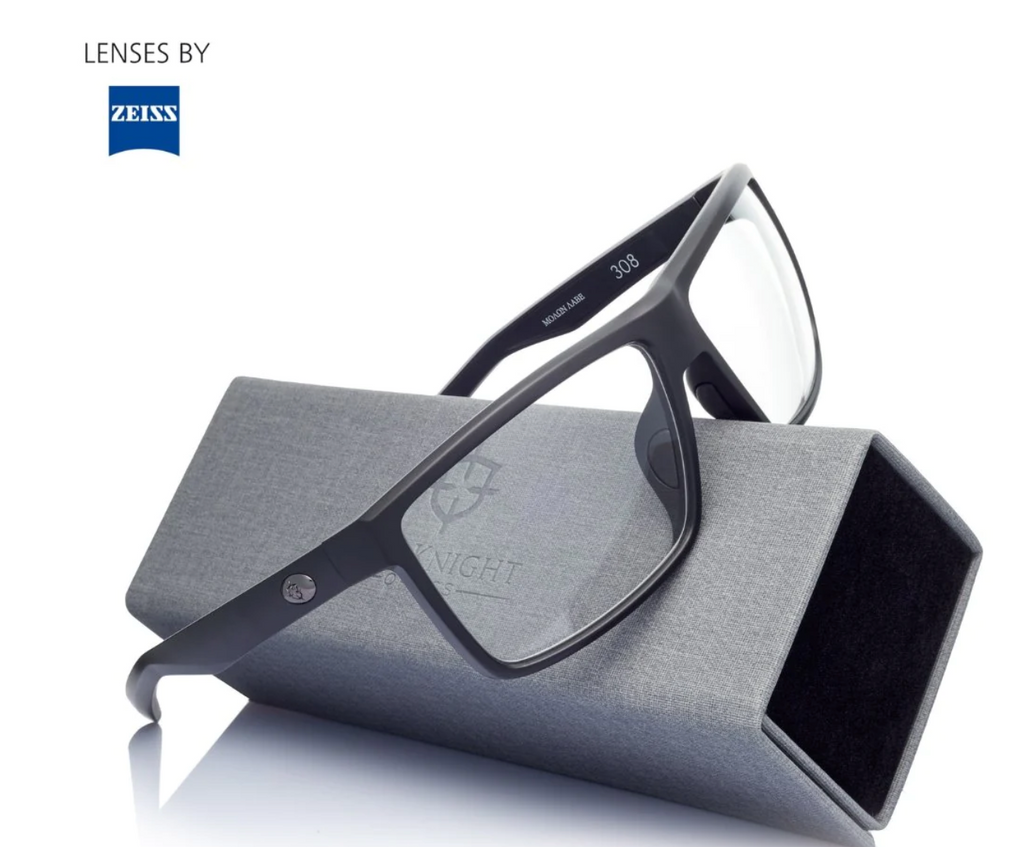How to Clean Zeiss Lenses: Expert Tips
Expert Tips for Cleaning Your Zeiss Lenses
Proper lens care is crucial for maintaining the clarity and longevity of your Zeiss lenses. Cleaning your lenses not only ensures better vision but also protects them from damage, whether you are using them in your shooting glasses or your sunglasses or even your prescription glasses. However, caring for them can be a bit more different than standard lenses, and we are here to provide you with expert tips and techniques for cleaning your Zeiss lenses effectively. From understanding the science behind Zeiss optical coatings to learning about the different types of Zeiss lenses and their care requirements, we will guide you through the entire lens cleaning process. We will also share advanced lens care tips and techniques for dealing with stubborn smudges and stains.
We also want to discuss how to maintain Zeiss lens coatings, protect your lenses from fogging and scratching, and store them properly. By following these expert tips, you can ensure that your Zeiss lenses remain in pristine condition and provide you with optimal vision for years to come.
Understanding Zeiss Lens Materials and Coatings

Before diving into the cleaning process, it is important to understand the materials used in Zeiss lenses and the coatings applied to them. Zeiss lenses are crafted with precision using high-quality materials such as plastic or glass. These lenses are then coated with specialized coatings to enhance their performance. These coatings, such as anti-reflective coatings, hard coatings, and CleanCoat, improve the durability, scratch resistance, and clarity of the lenses. Understanding the science behind these coatings will help you take better care of your Zeiss lenses and ensure their longevity. Proper cleaning techniques and tools are essential for maintaining the integrity of these coatings and keeping your lenses in optimal condition.
The science behind Zeiss optical coatings
Zeiss lenses are known for their exceptional optical coatings that enhance vision and protect the lenses from various environmental factors. The anti-reflective coating, for example, reduces glare and improves visual clarity by minimizing reflections on the lens surface. The hard protective layer provides an extra level of scratch resistance, making the lenses more durable. CleanCoat is another specialized coating that repels dirt, water, and oils, making it easier to clean the lenses and keeping them smudge-free. Understanding the science behind these coatings will help you choose the right cleaning methods and products to maintain the integrity of your Zeiss lenses. By following the recommended cleaning techniques, you can ensure that your lenses continue to provide you with clear, crisp vision.
Different types of Zeiss lenses and their care requirements
Zeiss offers a wide range of lenses, including both plastic and glass options. Each type of lens has its unique characteristics and care requirements. Plastic lenses are lightweight and more impact-resistant, making them suitable for active individuals. Glass lenses, on the other hand, provide excellent optical clarity but are more susceptible to scratches. Regardless of the lens material, proper care is essential to maintain their performance and longevity. Following the correct cleaning techniques, using the recommended tools and solutions, and avoiding abrasive materials are crucial for preserving the clarity and durability of your Zeiss lenses. By understanding the specific care requirements of your lenses, you can ensure that they continue to provide you with optimal vision.
Initial Preparation for Cleaning Zeiss Lenses
Before diving into the step-by-step guide to cleaning your Zeiss lenses, it is important to prepare yourself and gather the necessary tools and materials. Proper lens cleaning requires a few essential items that ensure effective and safe cleaning. These include a microfiber cloth, lens cleaner or cleaning spray, and folded wipes, all of which are specifically designed for cleaning eyeglass lenses. The microfiber cloth is gentle on the lens surface and is designed to remove dirt and smudges without scratching the lenses. Lens cleaner or cleaning spray is specifically formulated for lens cleaning and helps to remove oils and other substances from the lens surface. Folded wipes are convenient for on-the-go cleaning and provide a quick and easy solution for removing dirt and fingerprints. By having these tools and materials ready, you can ensure a smooth and effective lens cleaning process.
Tools and materials you will need
To clean your Zeiss lenses effectively, you will need the following tools and materials:
- Microfiber cloth: A high-quality microfiber cloth is essential for gentle and scratch-free lens cleaning. It effectively removes dirt, smudges, and fingerprints from the lens surface.
- Lens cleaner or cleaning spray: Zeiss lens cleaner or a gentle lens cleaning spray is specifically formulated for lens cleaning. It helps to remove oils, smudges, and other substances from the lens surface without causing damage.
- Lens wipes: Zeiss lens wipes are convenient for on-the-go cleaning. They are pre-moistened and designed to quickly and effectively remove dirt, fingerprints, and smudges from the lens surface.
- Cleaning solution: If you prefer using a cleaning solution, make sure it is specifically formulated for lens cleaning and safe to use on Zeiss lenses. Avoid using harsh or abrasive cleaning solutions that can damage the lens coatings.
By having these tools and materials on hand, you can ensure a thorough and safe cleaning process for your Zeiss lenses.
Pre-cleaning steps to avoid scratching
Before diving into the actual cleaning process, there are a few pre-cleaning steps you should take to avoid scratching the lens surface in the long term. Start by applying a few sprays of the lens cleaner or cleaning spray onto the lens surface. This will help to loosen any dirt or debris that may be stuck to the lenses. Next, gently wipe the lens surface with a microfiber cloth in a circular motion. This will remove any loose dirt or debris without applying too much pressure that could scratch the lenses. It is important to avoid using tissues, paper towels, or other abrasive materials that can leave scratches on the lens surface. By following these pre-cleaning steps, you can ensure that your lens cleaning process is safe and effective, without causing any damage to your Zeiss lenses.
Step-by-Step Guide to Cleaning Your Zeiss Lenses

Gently remove dust with a brush. Apply Zeiss lens cleaning spray on a microfiber cloth. Wipe the lens surface in circular motions. For stubborn smudges, use Zeiss lens cleaner. Avoid using fabric softener.
How to remove dust and debris without causing damage
To safely remove dust and debris from your Zeiss lenses, start by gently blowing any loose particles away. Avoid wiping the lens surface dry, as this may lead to scratches. Instead, use a clean microfiber cloth in circular motions to lift off any remaining particles of dust or dirt. Be cautious not to apply too much pressure. For stubborn debris, consider using a Zeiss lens cleaning spray along with the microfiber cloth. This method ensures effective cleaning while minimizing the risk of damaging your lenses, including the delicate screw holes in rimless frames. Remember, gentle and thorough cleaning promotes better vision and prolongs the life of your glasses.
Applying lens cleaning solutions effectively
To apply lens cleaning solutions effectively, start by choosing a high-quality Zeiss lens cleaner suitable for your specific lens type. Apply a small amount of the cleaner to a clean, microfiber cloth and use it to clean lenses. Gently wipe the lens surface using circular movements, ensuring thorough coverage. Avoid using excessive cleaner to prevent streaks. For stubborn smudges, repeat the process or use a Zeiss lens wipe for added convenience. Proper application of cleaning solutions will maintain the clarity of your Zeiss lenses without causing damage.
Drying techniques to prevent streaks
To prevent streaks when drying your Zeiss lenses, use a clean and dry microfiber cloth or dry cloths specifically designed for cleaning lenses. Ensure the cloth is free of any debris or lint that could cause scratches. Gently blot the lens surface rather than wiping aggressively to avoid leaving streaks behind. Another effective technique is to use individually wrapped and fast drying ZEISS Lens Wipes, which are convenient and portable for those with a fast-paced lifestyle. These wipes are made with high quality, micro-fine tissue and are free from aggressive cleaning agents, making them suitable for all glass and plastic spectacle lenses. Allow the lenses to air dry fully before using them again. This method helps maintain the pristine condition of your lenses, providing you with clear vision every time you use them. Remember, proper drying techniques are essential for a spotless finish.
Advanced Lens Care Tips
When dealing with stubborn smudges and stains on your Zeiss lenses, opt for specialized lens cleaning solutions or Zeiss lens wipes. For deep cleaning, consider using ultrasonic cleaners following manufacturer guidelines. To maintain your lens coatings, handle them with care to avoid damage. Ensure you're aware of common mistakes that could harm the coatings, such as using harsh chemicals or abrasive cleaning tools. By following these advanced lens care tips, including avoiding improper cleaning techniques, you can prolong the life of your Zeiss lenses and ensure they last a long time, allowing you to enjoy crystal-clear vision for years to come.
Dealing with stubborn smudges and stains
When faced with stubborn smudges and stains on your Zeiss lenses, it's essential to tackle them effectively without causing any damage. Use Zeiss lens cleaner or a mild soapy solution on a microfiber cleaning cloth to gently wipe away the marks. Avoid using excessive force to prevent scratching the lens surface. Employ circular motions for a thorough cleaning and ensure the cloth is clean. Remember to dry the lenses properly to prevent streaks for a pristine finish. This approach will maintain the clarity of your lenses for optimal vision.
Using ultrasonic cleaners for deep cleaning
Ultrasonic cleaners provide an effective way for deep cleaning your Zeiss lenses. These devices use high-frequency sound waves to remove stubborn dirt and debris from the lens surfaces without causing damage. By immersing your lenses in a gentle cleaning solution within the ultrasonic cleaner, you can achieve a thorough cleaning that reaches areas not easily accessible by manual methods. This occasional treat ensures your lenses are impeccably clean, maintaining their quality for better vision and longer service life.
Maintaining Zeiss Lens Coatings
To maintain Zeiss lens coatings, always use specialized cleaning solutions formulated for coated lenses. Avoid harsh chemicals that can strip the coatings. When cleaning, use gentle, circular motions with a microfiber cloth to prevent damage. Never use fabric softeners or abrasive materials that can scratch the coating. Regularly inspect the lenses for any signs of damage or degradation in the coating. By following these practices, you can prolong the life of your Zeiss lenses and ensure optimal visual clarity.
Caring for anti-reflective and other specialized coatings
To ensure the longevity of your Zeiss lenses' anti-reflective and specialized coatings, opt for Zeiss lens wipes or a zeiss lens cleaning spray. These products are gentle on the coatings, preventing damage to both the lenses and your digital devices such as mobile phones. Take care not to use fabric softener or harsh chemicals, as they can deteriorate the coatings. When cleaning, use a gentle touch and a microfiber cloth to avoid scratches. Proper care of these coatings will preserve their effectiveness and enhance your visual experience. Aim for a regular but gentle cleaning routine to maintain the quality of your lenses.
Avoiding common mistakes that damage lens coatings
When caring for your Zeiss lenses, avoid using harsh chemicals or abrasive materials that can damage the lens coatings. Never wipe the lenses when they are dry, as this can lead to scratches. Avoid excessive pressure while cleaning to prevent any potential harm to the delicate coatings. Additionally, do not store your lenses in extreme temperatures or expose them to greasy substances that can deteriorate the coatings. Adhering to these simple tips will help maintain the quality and longevity of your Zeiss lens coatings.
Protecting Your Lenses from Fogging and Scratching
To safeguard your lenses against fogging and scratching, utilize anti-fogging techniques or products. Prevent scratches by adopting scratch prevention practices diligently. By incorporating these strategies into your lens care routine, you can ensure prolonged clarity of vision and extend the lifespan of your glasses. Embracing these simple yet effective measures will provide you with a great feeling every time you put on your glasses, knowing they are well-protected from potential damage with less time and difficulty.
Anti-fogging techniques and products
To prevent fogging on your Zeiss lenses, consider using anti-fogging products like Zeiss anti-fog solutions or the specially designed Zeiss AntiFOG spray. Applying a small amount of the spray to the lens surface and rubbing it in with the enclosed cloth can effectively reduce fog buildup, ensuring clear vision in varying conditions. Additionally, avoid sudden temperature changes, as they can contribute to lens fogging. Proper ventilation and keeping your lenses at a consistent temperature can also help minimize fogging issues, providing you with uninterrupted visibility. Regular use of these techniques and products, such as the Zeiss AntiFOG spray and Lens Spray, can enhance your lens-wearing experience.
Scratch prevention practices
To prevent scratches on your Zeiss lenses, always use a microfiber cloth designed for lens cleaning. Avoid using harsh materials like paper towels or clothing that may contain abrasive particles. When cleaning, use gentle, circular motions to lift dirt and avoid applying excessive pressure. Additionally, store your lenses in a dedicated case or pouch when not in use to protect them from potential scratches. These simple practices can help maintain the clarity and longevity of your Zeiss lenses.
Storing Your Zeiss Lenses Properly

To ensure the longevity of your Zeiss lenses, proper storage is crucial. When not in use, store your lenses in a good home, such as a clean, dry, and safe spot or a protective case. Consider using lens cases or protective pouches, especially for travel or when not wearing your glasses. By storing them properly, you can prevent scratches, dust buildup, and other potential damages, ultimately extending the life of your lenses and ensuring better vision quality for a longer period.
Best practices for lens storage
To ensure the longevity of your Zeiss lenses, follow these best storage practices. Always store your lenses in a dedicated case or protective pouch when not in use. This shields them from dust, scratches, and accidental damage. Avoid placing your lenses in high-temperature environments, as temperatures over 80 degrees centigrade can damage even the toughest lenses or frames. Additionally, it is important to keep your lenses away from greasy substances and direct sunlight to maintain their pristine condition. Proper storage, including avoiding high temperatures and leaving them for long periods of time in extreme environments, plays a vital role in maintaining the clarity and quality of your lenses.
When to use lens cases and protective pouches
Using lens cases and protective pouches is crucial when storing your Zeiss lenses to prevent scratches and dust accumulation. Always employ these protective accessories, especially when traveling or when your lenses are not in use for extended periods. By keeping your lenses in a safe spot, you ensure their longevity and maintain their optical surfaces in pristine condition. Make it a habit to store your Zeiss lenses in cases or pouches every time you're not wearing them to safeguard their quality for a longer service life.
Frequently Asked Questions
Can I use alcohol to clean my Zeiss lenses?
Alcohol can damage Zeiss lens coatings. Instead, use a microfiber cloth with a lens cleaning solution recommended by Zeiss. This avoids harming the optical quality of the lenses.
How often should I clean my Zeiss lenses?
To maintain optimal clarity and performance, clean your Zeiss lenses monthly or more frequently if exposed to dirt or debris. Regular cleaning prevents build-up that can impact image quality. Follow the recommended care routine for best results.
Are all microfiber cloths safe for Zeiss lens cleaning?
Yes, not all microfiber cloths are safe for Zeiss lens cleaning. Avoid abrasive or dirty cloths that can scratch the lenses. Use only clean, soft microfiber cloths recommended for delicate lens surfaces to prevent damage.
What to do if water spots appear on my lenses?
To remove water spots on your lenses, use a microfiber cloth with lens cleaning solution. Gently wipe the affected areas in circular motions until the spots disappear. Avoid using harsh chemicals or abrasive materials that can damage the lens coatings.
Conclusion
In conclusion, maintaining the cleanliness of your Zeiss lenses is crucial to ensure optimal performance and longevity. By understanding the materials and coatings of your lenses, using the right tools and techniques for cleaning, and following proper care practices, you can keep your lenses in top condition. Remember to handle your lenses with care, avoid common mistakes that could damage the coatings, and store them properly when not in use. Regular cleaning and maintenance will help you enjoy clear, sharp vision through your Zeiss lenses for years to come.
Be sure to follow FortKnight Optics on Instagram!






